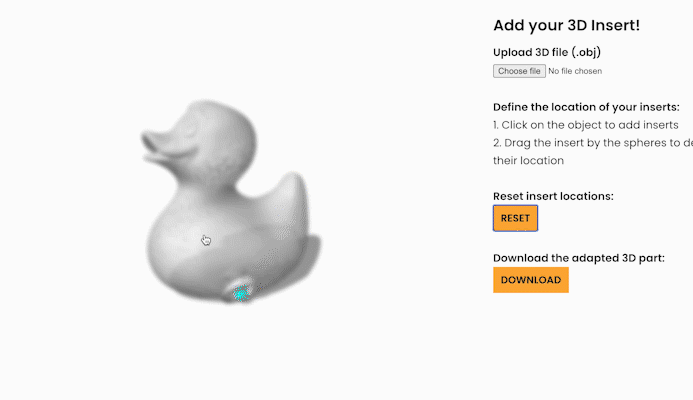<< This is a guest post written by Omidvarkarjan Daniel, a researcher from Inspire AG & ETH Zurich and part of the 3D insert project. Their configurator allows you to create mechanical interfaces to 3D-printed plastic parts. >>
What problem does 3D Insert solve?
3D printed parts often times require mechanical interfaces, which cannot be directly printed and therefore need to be integrated manually. This includes for instance threaded inserts for 3D printed plastics, which are required for screwed connections. They are typically mounted through pressing or heat setting. We have worked with these systems and felt that they were limited in multiple regards: The assembly is time-consuming and prone to errors. In addition, extensive knowhow of the 3D printing process is required to properly fit the inserts into the 3D prints, requiring costly experimentation.
For this reason, we have developed the 3D Insert . The bayonet-shaped metal insert is making use of the design freedom offered by 3D printing. It can quickly be mounted without specialized tools and is reusable thanks to the reversible connection, enabling therefore both time and cost savings. The 3D Insert is ideal for applications fields, which require high strength connections (e.g. orthosis, robotics, automotive etc.).
Figure 1: Working principle of the 3D Insert
What role does ShapeDiver play in your project?
With the help of our online configurator, users can easily define and position the 3D insert into their own designs. It is built with ShapeDiver. The backend incorporates the various manufacturing related requirements of 3D printing that formerly the designer needed to handle. For instance, the configurator automatically checks whether the entire insert is within the part contour and whether enough material is around it. If necessary, additional material is added. Experienced users benefit as the integration of the insert geometry into the 3D design file is vastly accelerated. Unexperienced designers do not require as much expertise on 3D printing as before.

Figure 2: With our configurator, users can easily integrate the 3D Insert into their own 3D geometries.
To sum up, ShapeDiver and design automation in general play an essential role for our solution. It enables us to redefine the value proposition of threaded inserts by transforming a physical commodity into a digitally augmented good of much higher value .
What influence does this have on the business aspects of your solution?
Also from a business perspective, the online configurator enables new opportunities by digitally extending the physical part. Digital business models can be used like a Print-Your-Own option, where customers configure their parts on a pay-per-use or subscription basis. After payment, the geometry file can be downloaded and printed by the user. Additionally, a platform model can be established, where we could collaborate with established contract manufacturers. By forwarding the manufacturing request, we would gain a share of their revenue.
Figure 3: The 3D Insert can be disassembled thanks to its specific shape.
What comes next?
We are currently initiating a pilot phase with 3D printing suppliers and practitioners. If you are interested in participating, please visit our website ( https://www.3d-insert.com/ ) and contact Daniel Omidvarkarjan ( omidvarkarjan@inspire.ethz.ch ) for more information.

Figure 4: The developers behind the 3D Insert configurator (from left): Daniel Omidvarkarjan, David Ochsner and Patrick Beutler.
<< Want to get in touch with Daniel and his team at 3D Insert? Make sure to check out their website and follow them on LinkedIn . >>
/f/92524/1423x870/2cb19e2849/mech2.webp)
